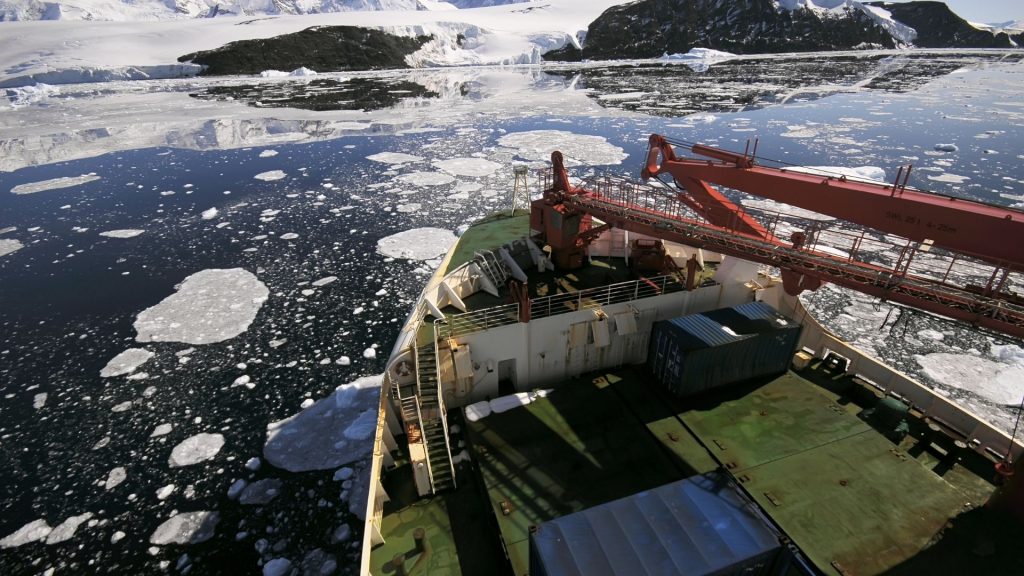
Any area exploring, especially as mysterious and unusual as the Antarctica continent, is impossible without the special transport equipment involvement. It expands the range of human capabilities, makes it possible to study this region with high quality and at the same time safely. We will find out what technique was applied and is used today on this continent.
Dog sleds and horses as transport in eternal ice conditions
In the first decades after the Antarctica discovery, the main transport that allowed expeditions to conduct research activities here were dog sleds. Amundsen made a successful trip to the South Pole with their help (end of 1911). More than a hundred dogs were brought aboard the Fram ship. A team of 5 people went on a hike with 4 teams of 52 dogs. Unfortunately, not all dogs survived in strict climate conditions. In addition, to survive, Amundsen planned to use dogs both as means of transportation and food for the team.
Engaging horses in the harsh Antarctica weather conditions turned out an unfortunate idea. The initiators were R. Scott and E. Shackleton. The ponies that scientists have pinned appeared to be entirely unadapted for the continent’s harsh cold climate. Due to health problems, they had to be shot a month after the start of the campaign.
Cars and tracked vehicles
Scott and Shackleton were the first to try mechanical ground transportation here. The first car was brought to the mainland by the Shackleton expedition in 1908. But the snowy surface and ice crust made it difficult to operate the car.
Before the second expedition, Scott took up the development of motor sleds. At the same time, a similar idea was captured by C. Zharko, the French explorer and engineer Bark. Zharco’s sleigh was driven by a large wheel fixed between the runners. Steel plates were fixed in the rim of the wheel connected to the engine. They guaranteed the snow grip and allowed the sled to move well on icy or snowy surfaces. The sleds designed by Scott used the principle of a caterpillar drive; however, they did not prove to be very effective in tests.
Later, Scott improves the design and creates a new tracked all-terrain vehicle that demonstrates better traction and flotation. The car drove perfectly loaded on snow and ice. After successfully testing the invention, Scott took 3 such vehicles on his next expedition to Antarctica. One was accidentally drowned during the vessel unloading, and the other two were successfully used on the mainland. Later, the scientists exploited this transport in field conditions (these motor sleds dragged behind them an ordinary sled, loaded with fuel and feed).
The first breakdowns were not long in coming (engine overheating). The mechanics struggled with the sleigh breaking, but the team decided to abandon the failed equipment. And despite such events outcome, scientists consider this experience of using mechanical tracked transport units positive. In general, the principle of mechanical traction has proven itself.
Flights over Antarctica
The first man’s flight in the sky over the mainland happened in February 1902. R.F. Scott, captain and explorer from England made his daring flight using a tethered balloon. On the same day, E.G. Shackleton took the first few photographs of this land directly from the air. Somewhat later, tethered balloons will used by the German Drygalski expedition.
The first aircraft engine hum was recorded in this region in 1928. Two British expedition planes took off into the air under the command of H. Wilkinson. The team (including researchers and 2 single-engine aircraft) arrived on the mainland on the steamer Hectoria. First, the team performed short test flights, and the first long flight took place on December 20. The plane made it possible to fly over Antarctica a distance of about 1000 km. Subsequently, the American expeditions of R. Byrd successfully used aircraft technology. He was able to reach the South Pole by air on November 29, 1929. Subsequently, airplanes were perceived as irreplaceable technology for research activities on the mainland. They made it possible to survey new territories, take photographs, and conduct geophysical research. Later, with the advent of another type of equipment in the face of sleds and tracked equipment, aircraft vehicles began to be used for transport purposes (fuel, food, and other resources transportation).
Modern tracked vehicles
Today, crawler-type machines are successfully used on the continent. These are vehicles that differ in exterior design, purpose, engine power. In Antarctica, modern researchers use both light motor sleds (called toboggans) equipped with motorcycle engines and powerful, durable snowmobiles (the power of their motors is counted in hundreds of horsepower).
Low-powered and lightweight toboggans are incredibly comfortable and practical. They manage to be delivered to hard-to-reach areas of the mainland, subject to research. Some toboggans can be controlled remotely. This nuance allows people to stay safe and make it easier to navigate hazardous territories (for example, trajectories with cracks, disguised under snow and invisible at first glance).
